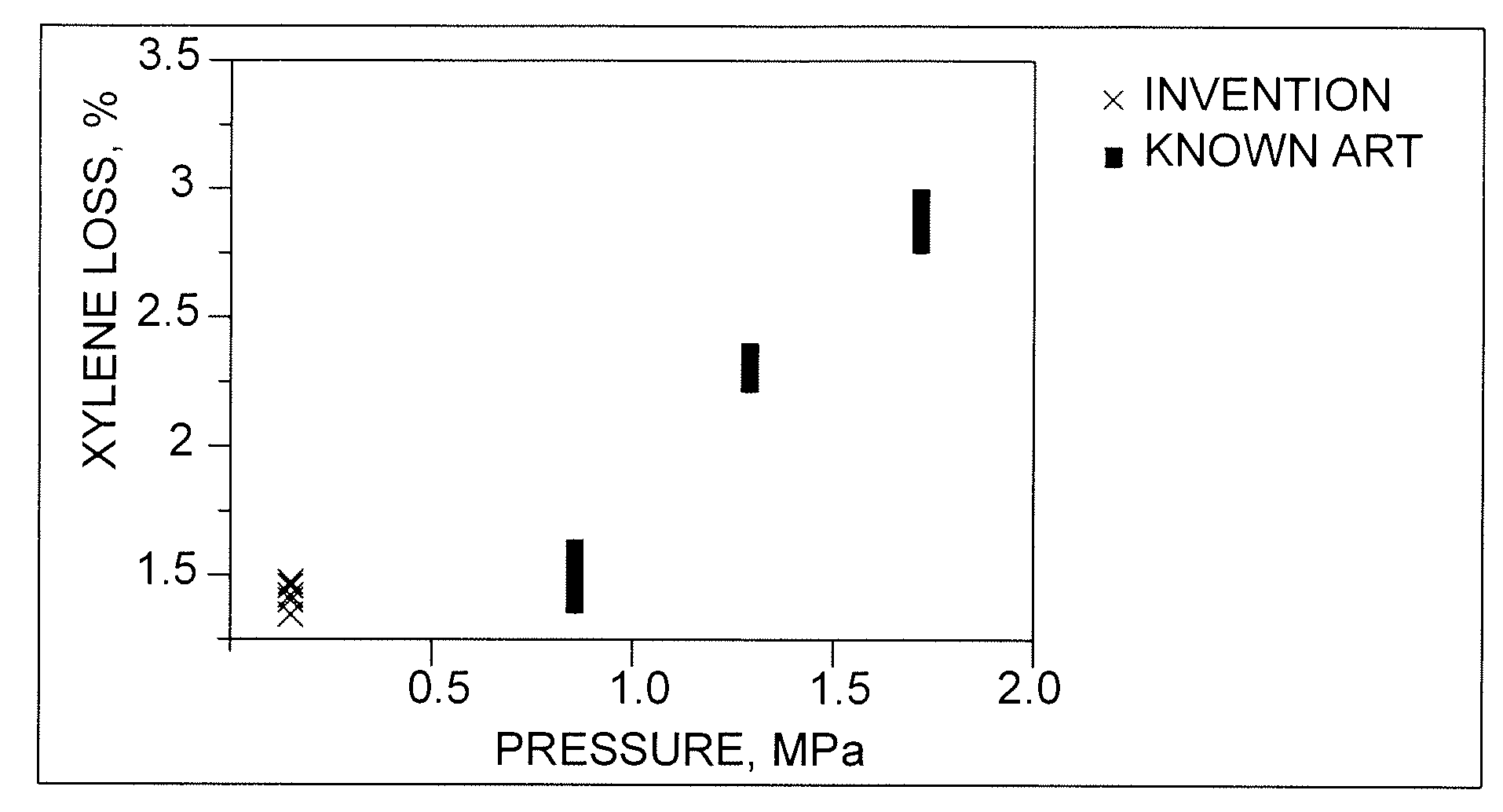Selective Aromatics Isomerization Process
- Summary
- Abstract
- Description
- Claims
- Application Information
AI Technical Summary
Benefits of technology
Problems solved by technology
Method used
Image
Examples
example 1
[0039]The C8-aromatics feedstock was isomerized in a pilot plant according to the known art at a hydrogen-to-hydrocarbon ratio of 4, a mass hourly space velocity of 10, and pressures of 0.96, 1.3 and 1.65 MPa. Temperatures were varied to effect ethylbenzene conversions in a range of from about 43% to about 90%. The results are compared with those of the process of the invention in FIGS. 1, 2 and 3.
example 2
[0040]The C8-aromatics feedstock was isomerized in a pilot plant according to the process of the invention at hydrogen-to-hydrocarbon ratios of 0.1 to 0.4, a mass hourly space velocity of 10, and pressure of. 390 kPa. Temperatures were varied to effect ethylbenzene conversions in a range of from about 65% to about 83%. The results are compared with those of the known art in FIGS. 1, 2 and 3.
example 3
[0041]FIG. 1 shows the results of the above tests with respect to xylene losses, e.g., by saturation and cracking, plotted against pilot-plant pressure. The results show that pressure has a significant effect on losses, which range from under 1.5% for the process of the invention and the lowest-pressure case of the known art to around 3% at relatively high pressure.
PUM
| Property | Measurement | Unit |
|---|---|---|
| Temperature | aaaaa | aaaaa |
| Temperature | aaaaa | aaaaa |
| Pressure | aaaaa | aaaaa |
Abstract
Description
Claims
Application Information
 Login to View More
Login to View More - R&D
- Intellectual Property
- Life Sciences
- Materials
- Tech Scout
- Unparalleled Data Quality
- Higher Quality Content
- 60% Fewer Hallucinations
Browse by: Latest US Patents, China's latest patents, Technical Efficacy Thesaurus, Application Domain, Technology Topic, Popular Technical Reports.
© 2025 PatSnap. All rights reserved.Legal|Privacy policy|Modern Slavery Act Transparency Statement|Sitemap|About US| Contact US: help@patsnap.com



